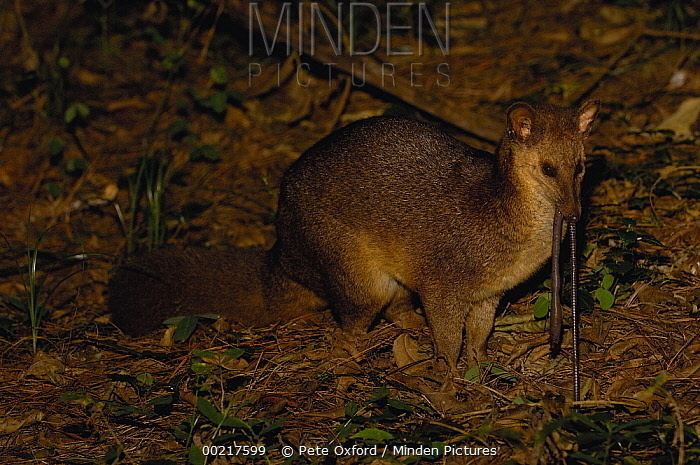Subfamily Euplerinae Order Carnivores | Genus Eupleres Phylum Chordata Rank Species | |
 | ||
Similar Eupleres, Malagasy civet, Brown‑tailed mongoose, Salanoia, Euplerinae | ||
The eastern falanouc (Eupleres goudotii) is a rare mongoose-like mammal in the carnivoran family Eupleridae endemic to Madagascar .
It is classified alongside the western falanouc, Eupleres major, recognized only in 2010, in the genus Eupleres. Falanoucs have several peculiarities. They have no anal or perineal glands (unlike their closest relative, the fanaloka), nonretractile claws, and a unique dentition: the canines and premolars are backwards-curving and flat. This is thought to be related to their prey, mostly invertebrates, such as worms, slugs, snails, and larvae.
It lives primarily in the lowland rainforests of eastern Madagascar, while E. major is found in northwest Madagascar. It is solitary and territorial, but whether nocturnal or diurnal is unknown. It is small (about 50 centimetres long with a 24-centimetre-long tail) and shy (clawing, not biting, in self-defence). It most closely resembles the mongooses with its long snout and low body, though its colouration is plain and brown (most mongooses have colouring schemes such as striping, banding, or other variations on the hands and feet).
Its life cycle displays periods of fat buildup during April and May, before the dry months of June and July. It has a brief courting period and weaning period, the young being weaned before the next mating season. Its reproductive cycle is fast. The offspring (one per litter) are born in burrows with opened eyes and can move with the mother through dense foliage at only two days old. In nine weeks, the already well-developed young are on solid food and shortly thereafter they leave their mothers. Though it is fast in gaining mobility (so as to follow its mother on forages), it grows at a slower rate than comparatively-sized carnivorans.
"Falanoucs are threatened by habitat loss, humans, dogs and an introduced competitor, the small Indian civet (Viverricula indica)."
